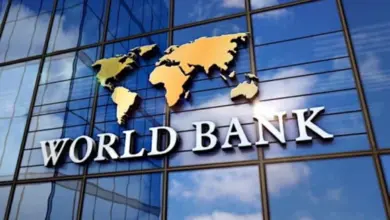A study on remittances and investment opportunities for Egyptian migrants was released in mid-July by the International Organization for Migration (IOM) in cooperation with the Egyptian Ministry of Manpower and Migration (MMM), the Center for Migration and Refugee Studies (CMRS) at the American University in Cairo, and the Italian Cooperation for Development.
The study looks at the importance of remittances to the Egyptian economy, which is a net exporter of labor and a major recipient of cash from abroad. It also examines links between remittances and investment.
“Remittances have received a lot of attention in the past years because they are the most tangible contribution of migrants to the development of their country. In our studies we also wanted to draw attention to other contributions such as circulation of skills, human capital and social networks that are often neglected, but are very important, for instance, for setting up small and medium businesses,” said Roberto Pitea, IOM’s regional research officer.
At the beginning of 2009 Egypt ranked as the seventh largest receiving country, with an estimated cash inflow of US$7.8 billion. According to the study, remittances represented 5.8 percent of Egypt’s GDP in 2008.
However the global financial crisis has seen remittances decline by about ten percent annually, and in Egypt there was a sharp drop of approximately 17.8 percent between the end of 2009 and the same point in 2008, according to the World Bank. While a decline had been anticipated, the percentage was considered high. “Such a large drop can be expected due to major labor redundancies following the economic crises in host countries,” said Mohamed Saleh, an economic researcher at the University of Southern California.
“What happened in 2008 was normal economic behavior for those who are working abroad and sending money to their home countries. The crisis affects the worker’s job security and supporting those at home becomes more difficult,” he added.
However, remittances are expected to pick up gradually as employment picks up, although the labor market always lags behind in the recovery from economic crises. This phenomenon can be observed in the Gulf markets which are recovering faster than their western counterparts.
Who sends the money?
In addition to a thorough review of the relevant regulations and policies which govern investment, the IOM conducted an empirical survey of 200 remittance-receiving households in Cairo, Menufeya, Fayoum and Sharkeya.
The study found that Egyptian migration is essentially a male phenomenon, with men representing 91 percent of the senders in the households surveyed. Migrants are between 15 and 70 years but the median age is 35. Correspondingly, the study revealed the vast majority of recipients (70 percent) are female.
The education levels of migrants are generally high, 59 percent of migrants have completed university degrees, compared with only ten percent of the general population.
Eighty one percent of migrants work in the Arab Gulf countries, mostly in Saudi Arabia, with the next largest population working in the United Arab Emirates.
Where do remittances go?
The research team found that the amounts received ranged from LE110 to LE15,000 per month with a median amount of LE1500. However, there are significant differences between governorates, with households in Cairo reporting a median income of LE3000, while in Fayoum, the amount is only LE600. This is consistent with lower levels of education in the profiles of the migrants from this area and their inability to command such high salaries.
While only one per cent of respondents cited investment as a reason for leaving the country, 20 percent of households actually channel remittances towards savings. Half of those who were saving invested in real estate with about the same number preferring small and medium enterprises (SMEs), stock markets and agriculture.
Reported reasons for households not to invest included lack of access to credit, a perceived high risk in investing in Egypt and a lack of information about investment opportunities. Government policy, including high taxation, extensive bureaucracy and corruption were also cited as reasons not to invest.
Most recipients however use the income to meet the daily needs of their families, including healthcare and education. Pitea points to the fact that this shows remittances play a vital party in poverty alleviation and investment in human capital in Egyptian society.
Ways forward:
The study recommended some steps to promote more direct remittance-based investments. “It would be useful to establish specific programs in different governorates to provide business and investment advice to migrant families and the migrants themselves,” said Pitea.
This could be done by simply devising a migrant-specific outreach strategy for existing initiatives such as the micro-credit program administered by the Social Fund for Development or the one-stop shop put in place by the General Authority for Investment and Free Zones.
The report also advised setting up an information desk at Cairo International Airport that can provide information to homecoming Egyptians, a high impact strategy if done in tandem with important stakeholders.
Since the majority of recipients and investment decision makers are females, Pitea advised looking into gender-responsive and family-specific programs that could be developed to educate and assist women in budgeting and investment, through improving their levels of financial literacy and building their capacities to manage investment.




